🍅 “I like tomato, you like tomahto… 🎶
🥔 I like potato, you like potahto.” 🎵
Or was it the other way around? 🍅🤔🥔
Who decides what’s correct and what is not when it comes to tomatoes and potatoes, anyways. Despite pronunciation,* there are also disputes regarding the classification of these two food items. Is a tomato a fruit? Or is it a vegetable? Is a potato a vegetable? Or is it more than that, considering it is a staple just like bread, noodles or rice in many countries other than Korea? ➡️ fries🍟 = 🍚 rice ➡️ ❌ or ✅❔
Moreover, is there even such a thing as the “right” way of consuming them? In a previous post, I’ve introduced you to the Korean way of eating potatoes. Now, let’s take a look at tomatoes in Korea… 🤓
- Table of Contents:
- 👁 What tomatoes in Korea look like
- 👅 How to eat Korean tomatoes
- 🍅 Are tomatoes fruits or vegetables?
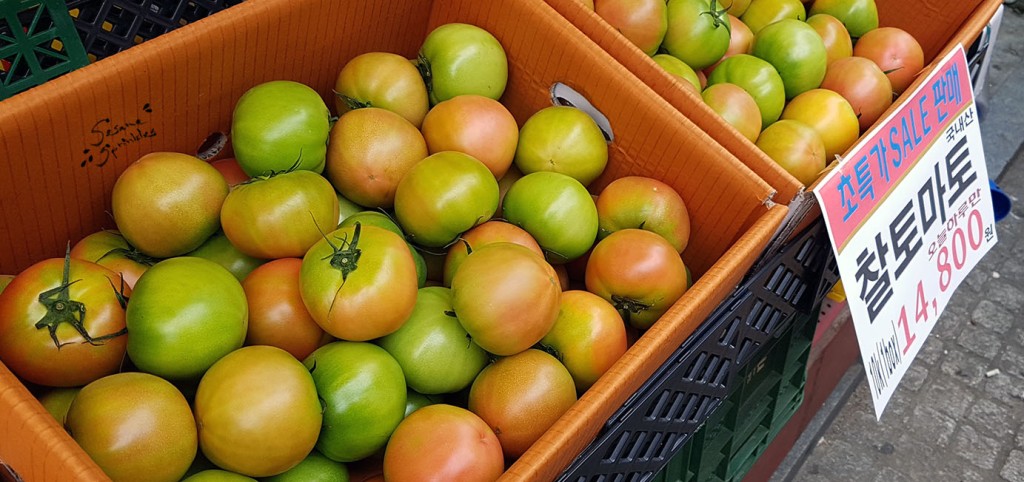
👁 What tomatoes look like in Korea
When you see tomatoes in Korea, the first thing you will notice is that they look different. Today, there exists such a diversity of tomatoes all over the world. Korea’s tomatoes are pink or green or even both! One of the most common varieties is the “chal tomato” (찰토마토), which is pinkish and somewhat green. Apart from the color, they are similar in size and shape to the regular, bright orange-red tomatoes, which are most common in Western cuisines. But these Korean tomatoes taste less tart and have a dry, almost grainy texture when consumed raw. Then, there’s also the dark green “daejeo tomato” (대저토마토), also called “heuk tomato” (흑토마토 – black tomato) or “jjapjjari tomato” (짭짤이토마토 – lit. ‘salty tomato’), hinting at characteristics of this kind of breed. But there exist also global varieties such as the small but popular cherry tomato which is called bangul tomato (방울토마토) in Korean, translating to “water drop tomato”. Occasionally, one can encounter more exotic varieties like the “green grape tomato” (cheong-podo tomato 청포도토마토), which supposedly creates good eating sounds (#ASMR).
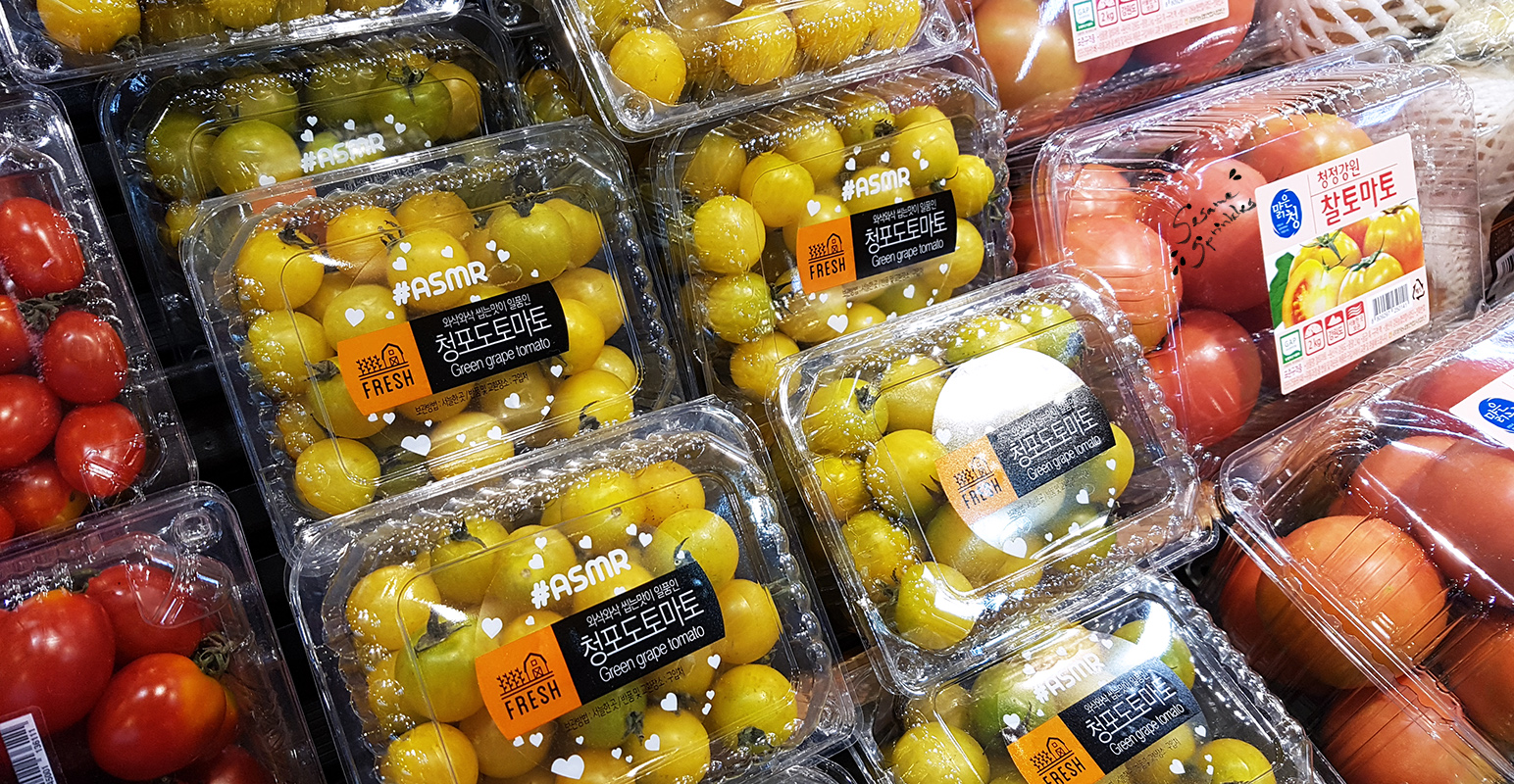
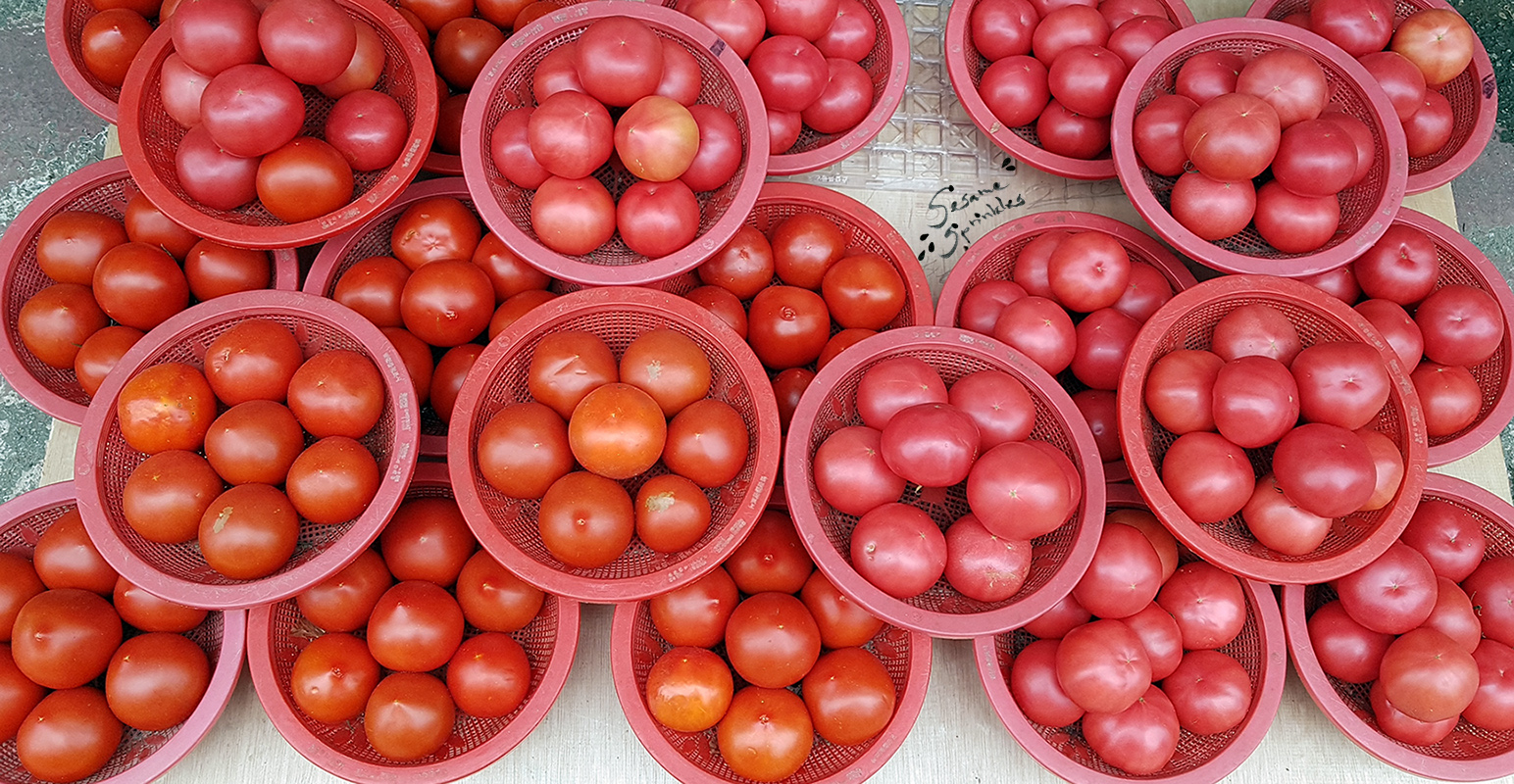
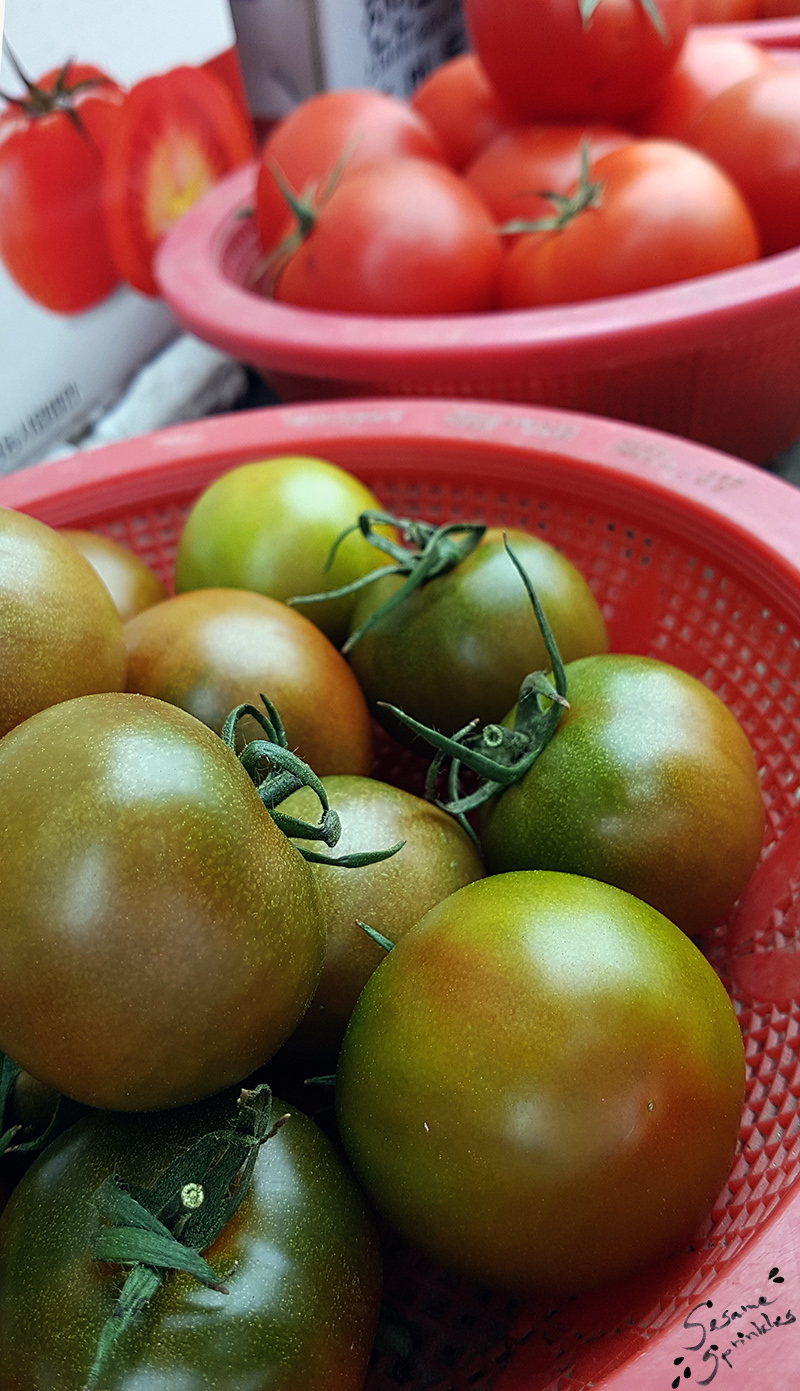
👅 How to eat tomatoes in Korea
Let’s move on towards how Koreans eat tomatoes. If you are convinced that tomatoes are vegetables and you drink your tomato juice with salt and pepper (maybe even hot chili flakes or Tabasco!), then you must have grown up in the so-called Western world.
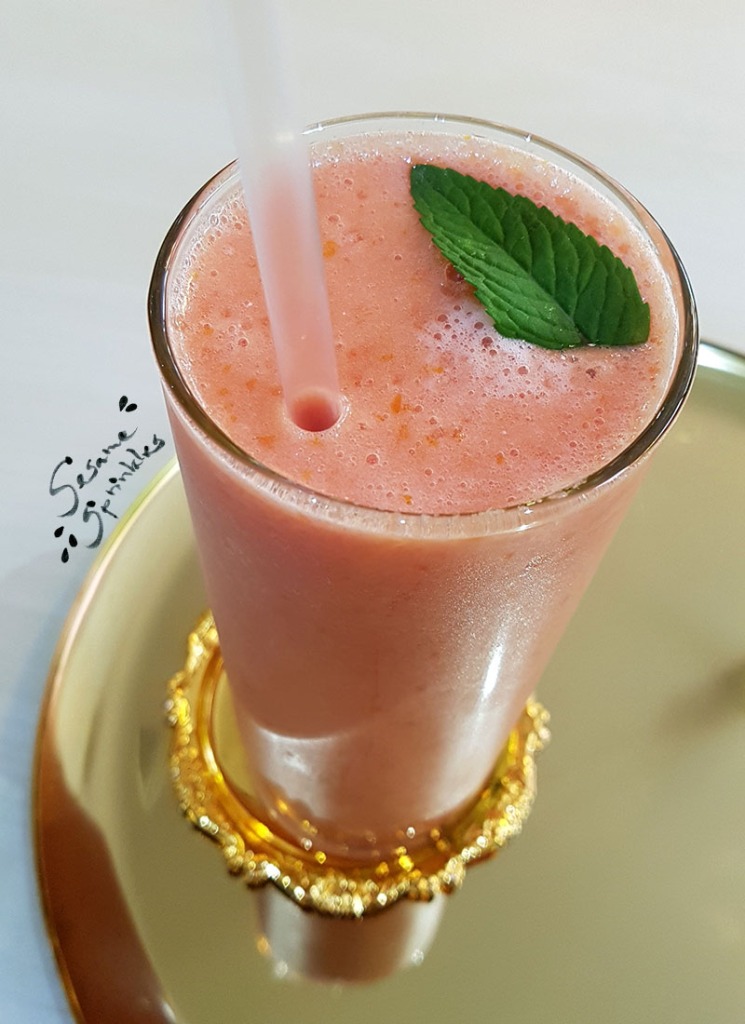
If you then have tomatoes in an East Asian country such as China or Korea, you might get the shock of your life. Because there, tomatoes are naturally seasoned with sugar. Or sugar syrup. Or honey.
💣
💥
🤯
Why?????????????????????????????????????????????
You might ask yourself after the initial shock vanishes, allowing your brain to work again.
This happens to me every time when I order fresh tomato juice and forget to mention that I don’t want my serving to be sweetened. In most Korean coffee shops or juice bars, the basic recipe for “tomato juice” (토마토주스) – which is actually more like a smoothie – is blending fresh tomatoes with water and sugar syrup. And more fancy variations feature honey instead of syrup. 🍯 Either way, unless you interfere, the tomato drink will automatically be served sweet.
But if YOU personally prefer tomato juice without any sweetener at all, you could use the following sentence when ordering:
- “Please do not add sugar, syrup or honey into my tomato juice.”
- 토마토주스에 설탕, 시럽이나 꿀 넣치 마세요.
- Tomato juseu-e seoltang, sireopina kkul neochi maseyo.
- 토마토주스에 설탕, 시럽이나 꿀 넣치 마세요.
This should arrange for you to be served plain tomato juice, and it gives you the chance to enjoy it the way you like it – be that pure or savory with added salt, Tabasco, or whatever – you name it!
If you get pre-made tomato juice from a supermarket or a convenience store, however, even your freshly acquired Korean skills cannot help much. The tomato juice is most likely going to taste sweet. You could still use your language skills to check the label before purchasing it.
Then it’s your choice between accepting the novel taste or avoiding it altogether.
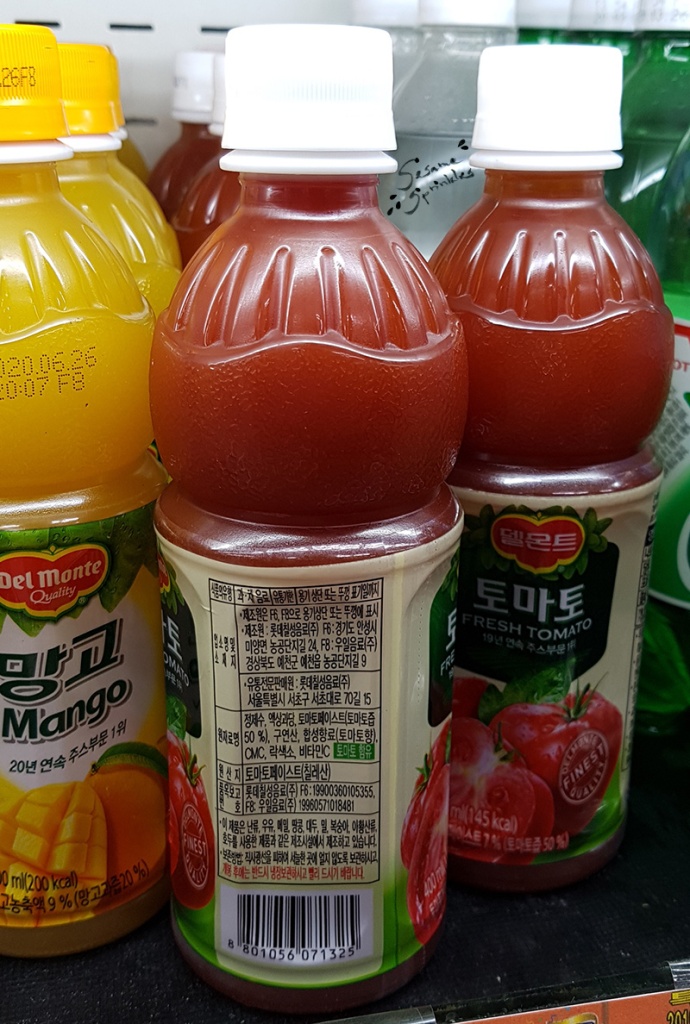
But stay alarmed, because you will encounter sweetened tomatoes in other places of Korea’s food world as well!
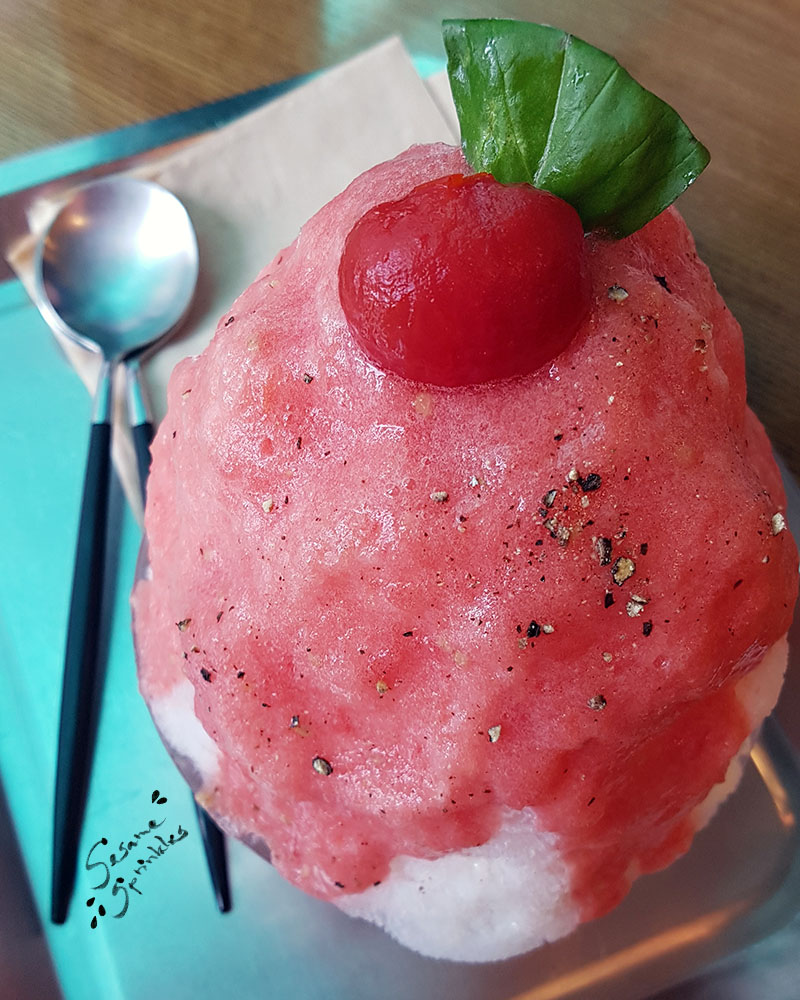
Of course, you can find tomatoes also in familiar dishes like pasta an pizza, which although localized to suit Korean taste buds are normally savory and salty. 🍝🍕
But in addition to the aforementioned, sugary tomato juices, some cafes even offer tomato lemonade! Such drinks are normally advertised as house-made and hand-made, prepared with whole fruits, some kind of sweetener and sparkling water. 🥤
At other places, you might get ice cream or Korea’s summer dessert bingsu (빙수) with tomato flavor: Frozen milk, shaved into fluffy, snowflake-like ice crystals which instantly melt in your mouth, is garnished with the slightly tangy flavor of sweetened tomatoes and pink tomato sauce. Yuck or yum? 🍧🍅
Some time ago, I even encountered a chocolate fondue, which featured pieces of cake, cookies, ice cream and fruit. 🍫🍰🍪🍦🍓 Among those fruit, which were supposed to be dipped into molten chocolate, there were cherry tomatoes! 🍫🍅 The taste is up to you and your imagination. Back then, I was too appalled that I did not dare trying it and instead watched (half in horror, half in curiosity) my sister eat everything… In hindsight and perhaps with a few more years of “life experience”, I am thinking it couldn’t have been thaaaat bad. After all, everything tastes good with chocolate, right? 😋 [Still, I am not willing to cook this up for myself, just to give it another shot!]
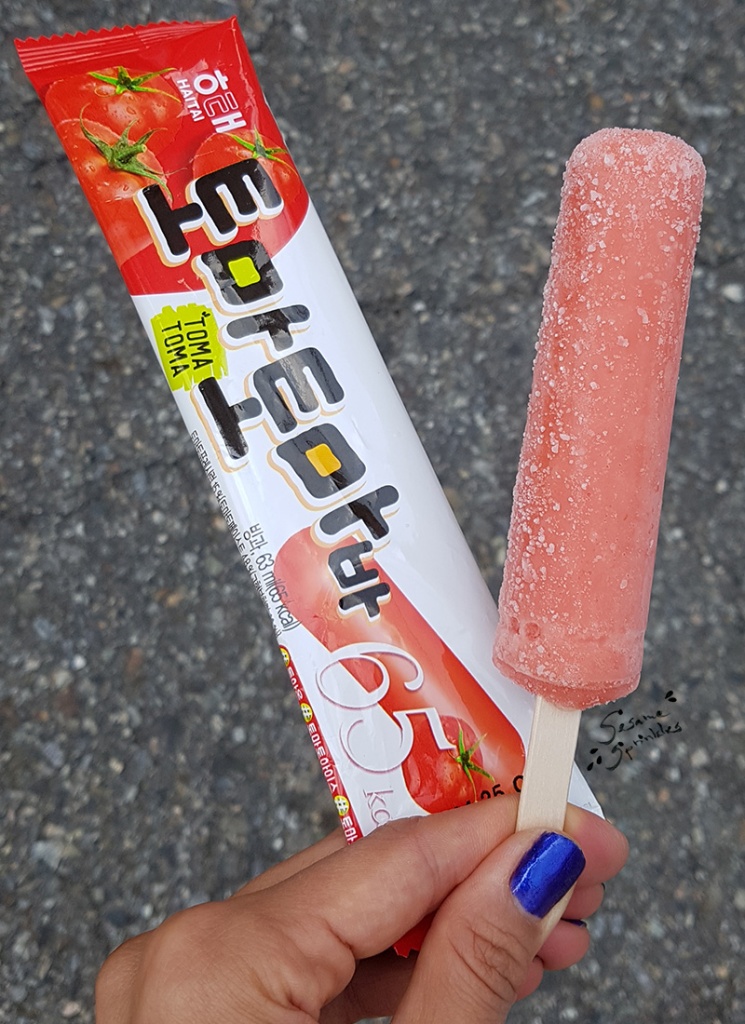
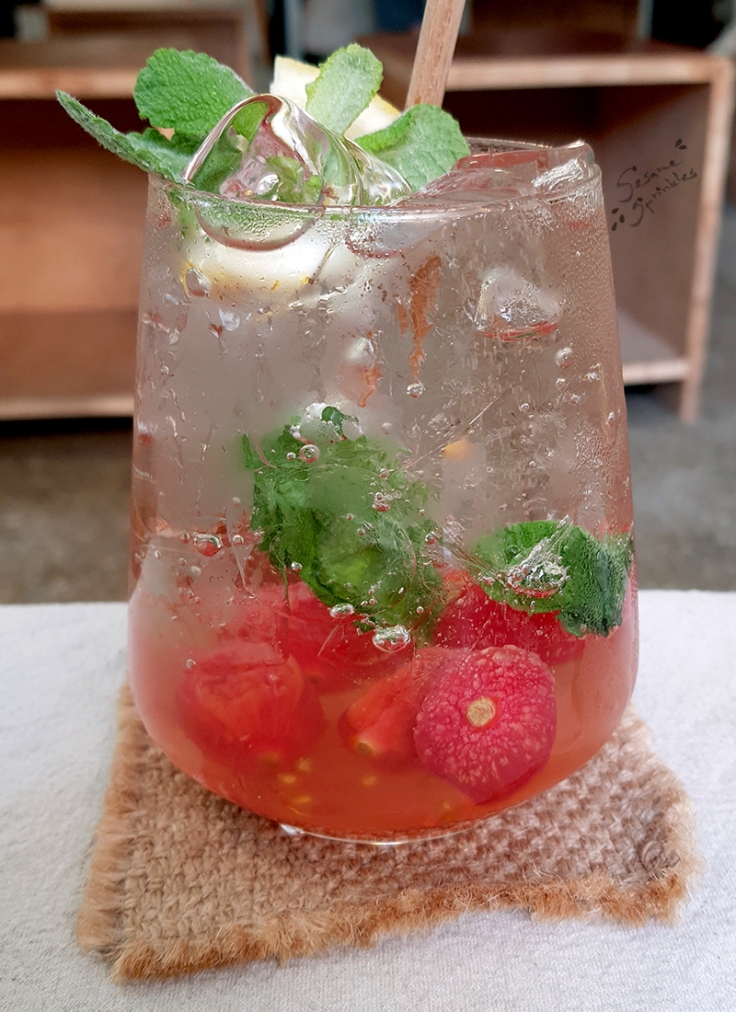
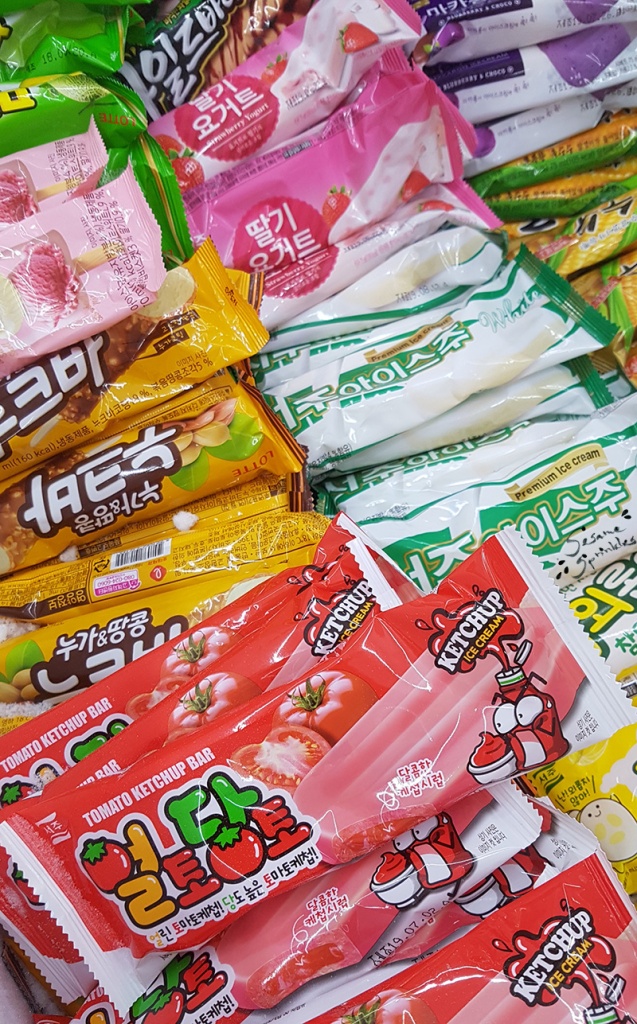
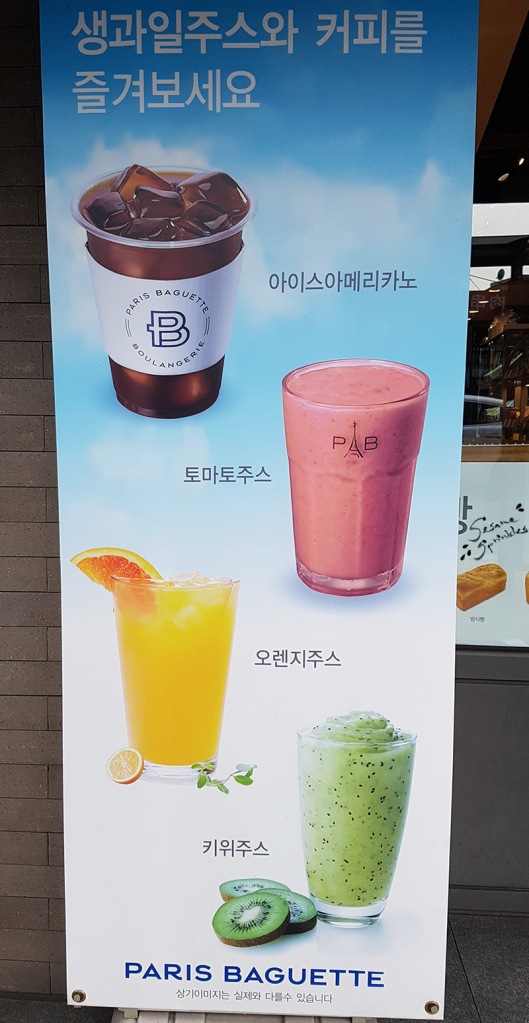
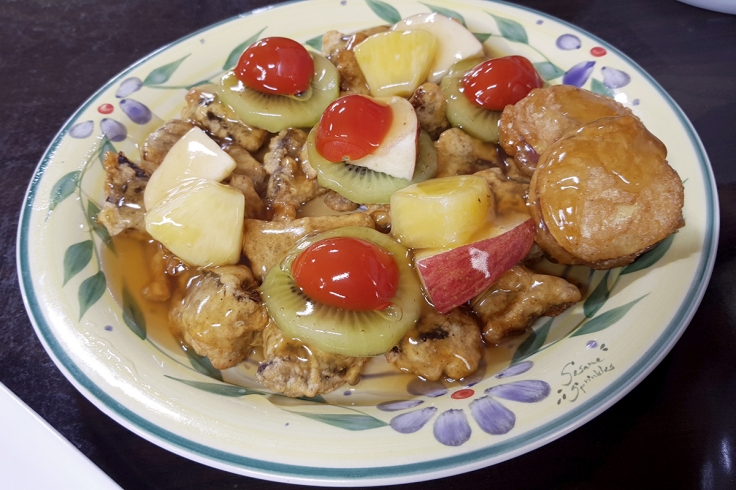
Last but not least, you can discover tomatoes on fruit platters, in assortments of fruits or simply served for dessert on their own. 🍓🍍🍇🍏🍅 Most recently, small tomatoes that are sweetened with stevia have started to enter Korean food markets! Let me say that again: Fresh tomatoes infused with stevia!!! [Stevia is a natural sweetener and has been added to the tomatoes artificially.] It cannot be removed from the tomatoes, even if you wash them! 🤯 If you want to avoid (or specifically purchase them), look out for words like “Peachup”, “Tomango”, “고당고” or “stevia” (스테비아).

🍅 Are tomatoes fruits or vegetables?
I guess the answer to the big question of WHY tomatoes are largely eaten sweet in Korea, is that tomatoes are treated like fruits.
Apart from above mentioned desserts and sweetened drinks, other instances illustrating that tomatoes are considered as fruits can be discovered during ancestral ceremonies or at Buddhist temples. On certain occasions, fruit and other valuable delicacies are ritually offered to deceased spirits and deities. There, you can sometimes encounter tomatoes artfully stacked, next to towers of other types of fruit such as apples, melons, grapes, bananas, oranges, tangerines and pears.
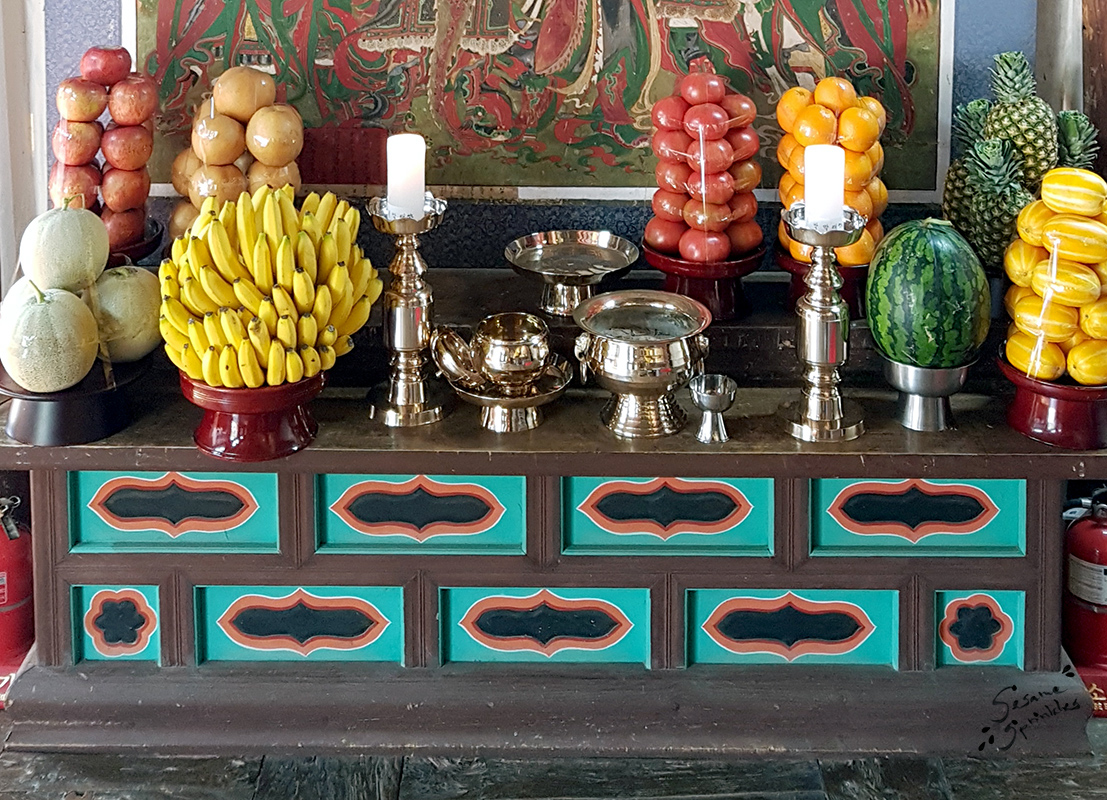

The know-it-all says:
“Botanically, tomatoes are indeed fruit. They are the seed bearing fruits of tomato plants.” 🤓
But following the same logic, also cucumbers and eggplants are fruits. Why don’t we eat those sweetened for dessert? [Seriously, why not?]
I have no answer to the last question. Do you?
I would love to hear some explanations. I would also love to hear, how you enjoy tomatoes. Sweet or savory? Fresh or cooked? Red or green? Maybe you know of some other country’s exotic way with tomatoes?
My only conclusion here is that tomatoes, however we may classify them, are diverse and fascinating. 💚🍅❤️
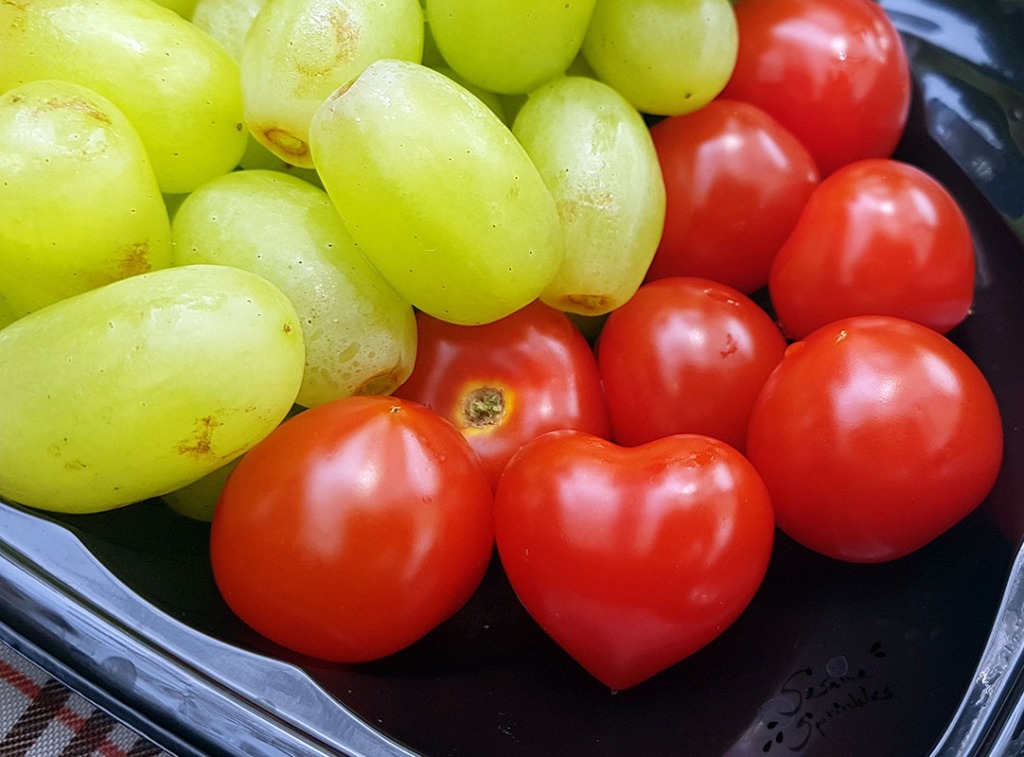
.
.
Additional notes
*) Above quote is a reference to the song “Let’s Call the Whole Thing Off” in the movie Shall We Dance (1937).
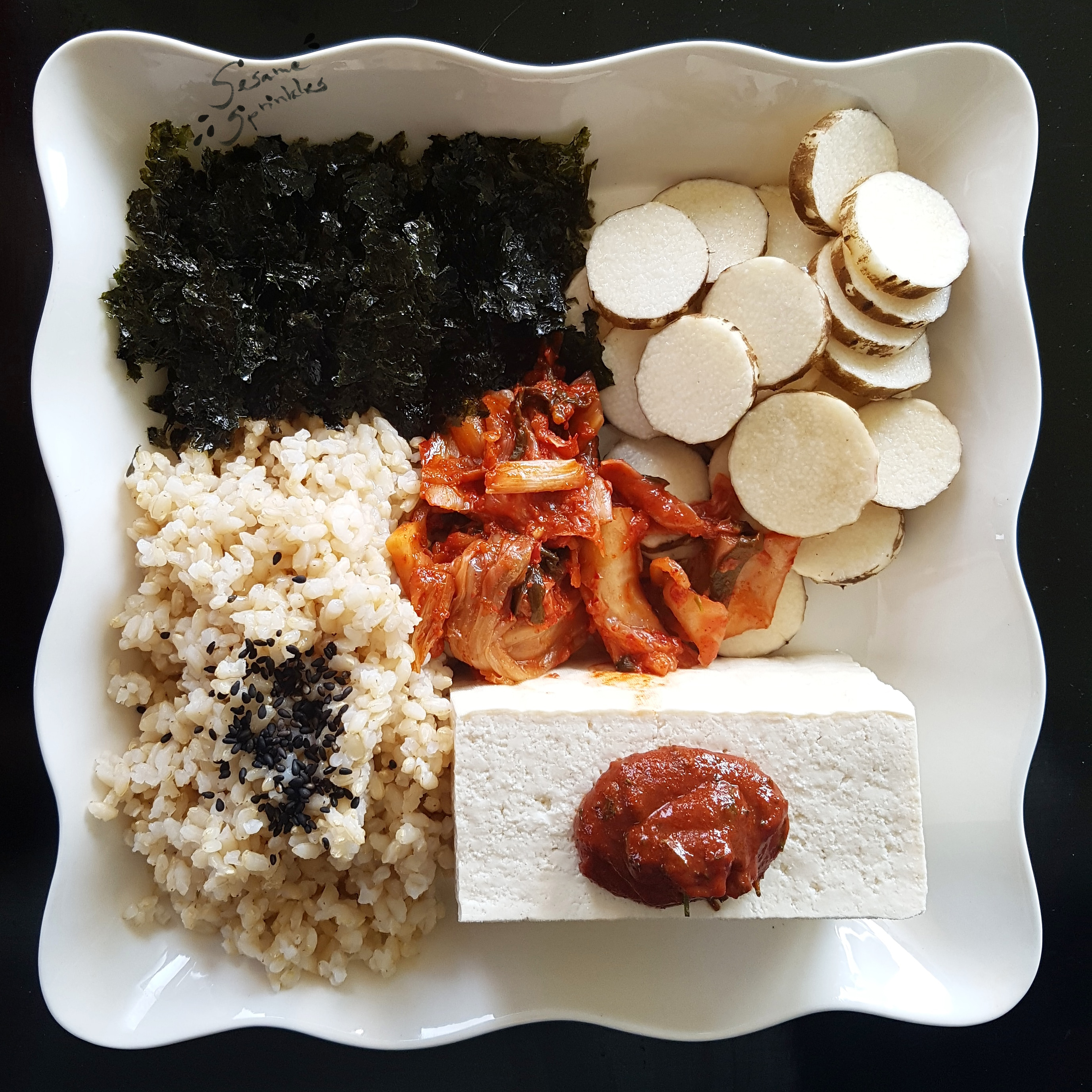






Loved the song reference to one of my favourite Gershwin classics. Well there all favourites of mine, especially when interpreted by Louis or Ella, or even better both of them! ❤️
India has a lot of sweet tomato recipes, too. Like tomato jam. Strange taste in the beginning but also kinda cool. So I would definitely wanna try Korean style.
Thanks for the fun read! 🙂
LikeLike
Thanks for your comment! ♡ Indian tomato jam sounds interesting! Is it like a kind of chutney to eat as a sauce? Or do you eat it spread on bread?
LikeLike
It was at a restaurant in the states. They said it was authentic Indian food, though. I don’t remember which region, however.
I had it as appetizer with mango chutney and naan bread. There was a spicy and a sweet blend. 🙂
LikeLiked by 1 person